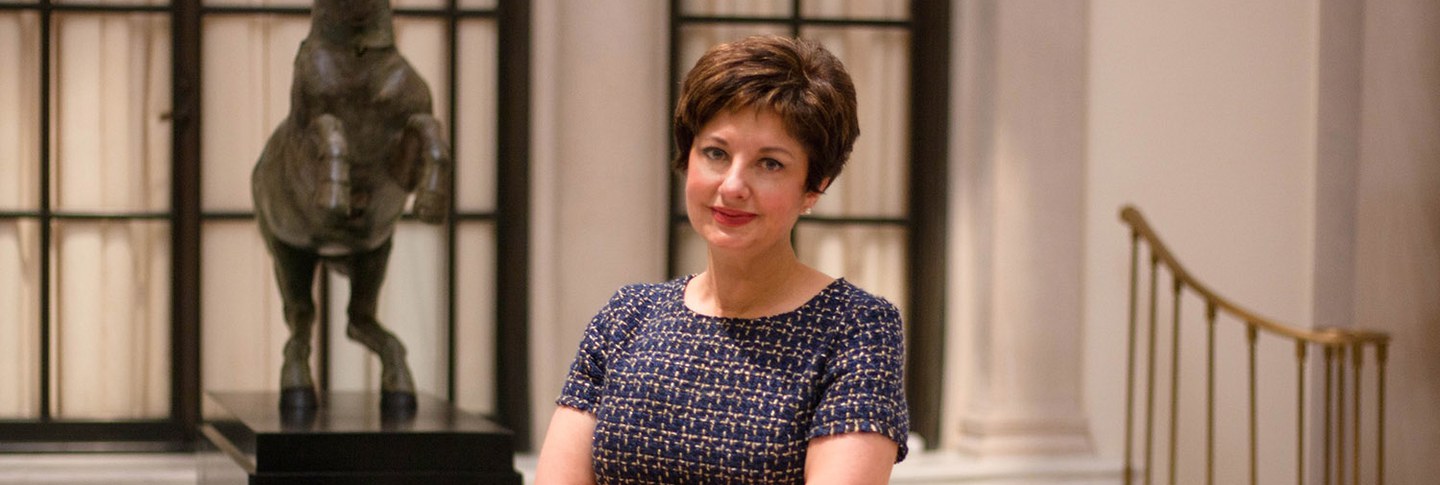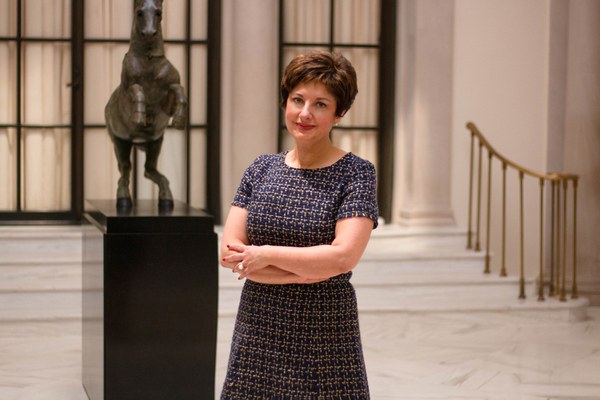Eurydice Georganteli, lecturer in the history of art and architecture and managing editor of the Digital Atlas of Roman & Medieval Civilizations (DARMC) at Harvard University, is a visiting scholar in Byzantine Studies. Her recent talk, “Whose Culture? Archaeology, Byzantine Studies, and Modernity along Egnatia, 1864–1923,” introduced one of the oldest routes of cultural exchange.
Q&A with Eurydice Georganteli
What is the Via Egnatia?
The Via Egnatia is a two-thousand-year-old European land route of some 1,120 km (696 miles). Constructed by the Romans in the second century BCE over a path initially conceived by King Philip II of Macedon in the fourth century BCE, the Via Egnatia once connected the Adriatic coast to the Hellespont—Europe to Asia and beyond. On this road, the ancient kingdom of Macedonia expanded and transitioned to empire, and Rome solidified its power in the east. In the first century, Egnatia became intertwined with Saint Paul’s travels and the first Christian communities in Europe: Philippi, Thessaloniki. This is where Byzantium ascended to the world stage, where the most populous Sephardic communities in Europe lived for centuries, and where the European heart of the Ottoman Empire lay until 1913.
Egnatia preserves six UNESCO world heritage sites; Hellenistic, Roman, and medieval monuments; renowned centers of Christian Orthodox monasticism; stunning examples of Byzantine and Ottoman art and architecture; and fragments of the once-thriving Jewish communities in the area. The connections the road has afforded between communities, ideas, languages, and religious practices have resulted in some of the most emblematic examples of ancient, medieval, and early modern tangible and intangible heritage. As such, Egnatia is a cultural route as defined by UNESCO’s International Council on Monuments and Sites: it is not designed like a tourist route, it has its own specific and historic dynamics and functionality.
Why does the road matter for conversations around European and world heritage?
I began studying the Via Egnatia as a scholar of late antiquity and Byzantium. My fieldwork in the Balkans offered me the chance to appreciate Egnatia’s expansive historical and cultural vistas, which are spellbinding but understudied. The spatial and historical trajectory of the road is a microcosm of the history of Europe in terms of empires, ethnic and religious communities, the built environment, artistic and monetary production, conquest, travel, antiquarian research, botany, archaeology, photography, cartography, and armed conflict. My work evolved into the cultural biography of a lost world.
The US and Europe both face crises—the refugee and migrant crisis, increased attacks on some of the oldest religious communities in Europe, including those along Egnatia, destruction of culture and memory, and disengagement and alienation of young people from museums, history, and the modern world’s cultural heritage. A comprehensive study of Egnatia, therefore, goes beyond history, archaeology, and numismatics. Understanding a major cultural route helps us become effective participants in policymaking processes that address cultural diversity, religious accommodation, and citizenship in the twenty-first century. Finally, when looking for ways to engage the next generation of visitors to museums and heritage sites, Via Egnatia is a most attractive platform for storytelling, personalized digital itineraries, and the study of the past.
What have you discovered about the late Ottoman phase of the road?
That particular period was one of extraordinary political, socioeconomic, and religious changes for the ancient path and its inhabited landscapes. The challenge, therefore, was how to best tell the story. I chose archaeology and photography, whose emergence in the nineteenth century became a game-changer for the rediscovery and study of the road. Bookended by the destruction of Thessaloniki’s most prominent Roman landmark in 1864 and the population exchange in 1923, the world of Egnatia appears in sharp focus through the lens of pioneer photographers, cinematographers, and archaeologists. Their meticulous approach displays a new appreciation and sensibility toward the communities, monuments, and memory associated with the course of the road.
To further this research, I look forward to reviewing the Dumbarton Oaks Image Collections and Fieldwork Archives (ICFA)—which do a fabulous job of highlighting destroyed or vandalized structures to preserve a record of this architectural and cultural heritage—after discussions with Byzantine postdoctoral fellow Stephanie Caruso. At the heart of Dumbarton Oaks lies the principle of collaborative research as Wilhelm Koehler eloquently discussed in a 1943 Speculum article. Despite the restrictions and devastation the pandemic has inflicted this spring, I am grateful for the time and conversations I have had. From artistic representations of the liturgy to Mount Athos manuscripts, late antique ekphrasis and epigrams, porphyry and stucco, and oath-swearing ceremonies; from medieval Ethiopia to eleventh-century Thessaloniki and further north to Great Moravia and the Byzantine missions to the Slavs, this cornucopia of subjects and Byzantine fellows has provided me intellectual nourishment and the blessings of new friendships. I also look forward to working with the coins and seals collection and its curator, Jonathan Shea. Finally, I found inspiring conversations about landscapes, photography, and architectural history with Garden and Landscape Studies Program Director Thaïsa Way and fellow Zeynep Kezer. This is a place of remarkable encounters and happy reunions.
Julia Ostmann is postgraduate writing and reporting fellow at Dumbarton Oaks. Photo by Elizabeth Muñoz Huber, postgraduate digital media fellow.

